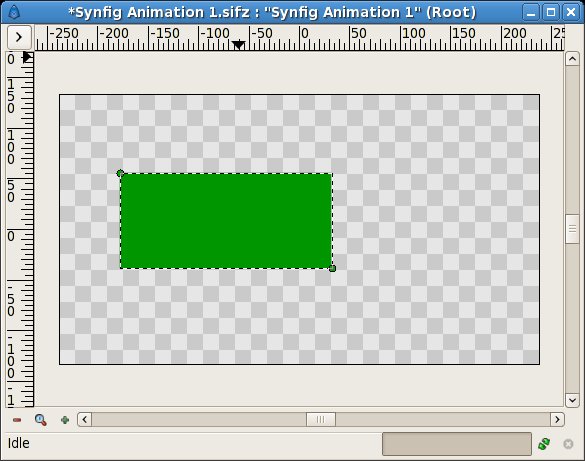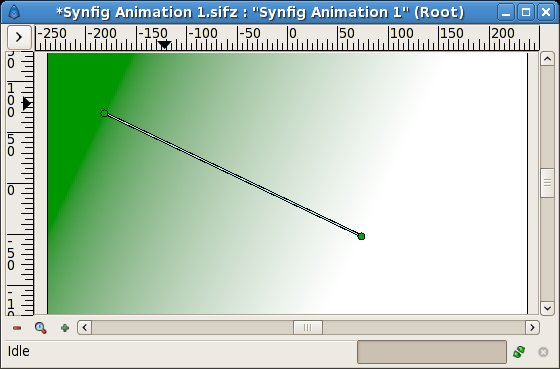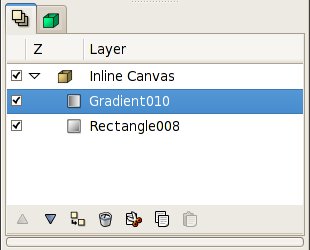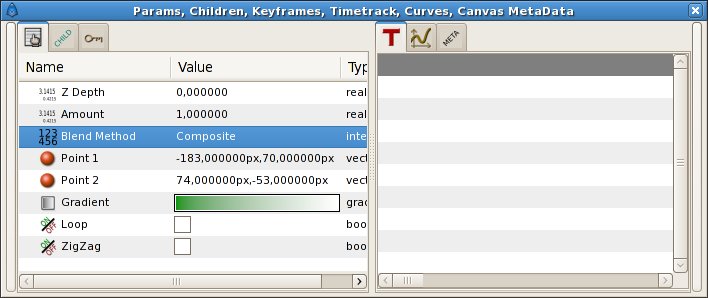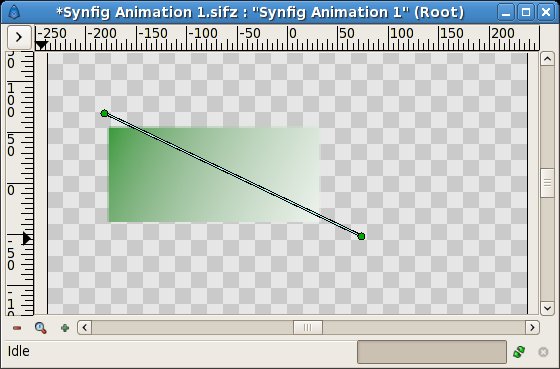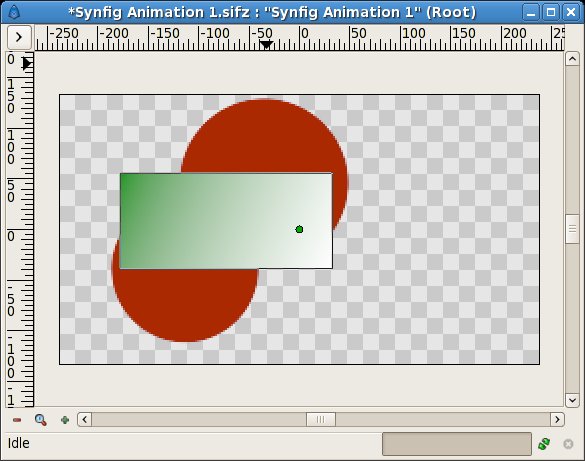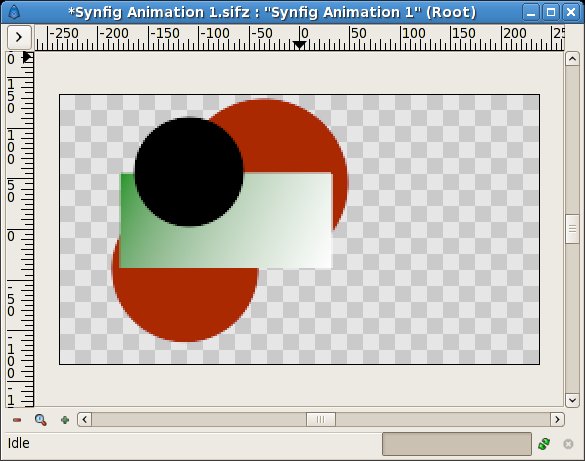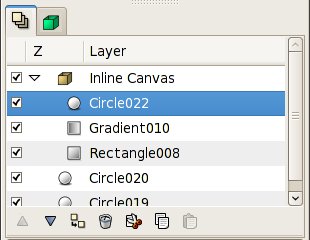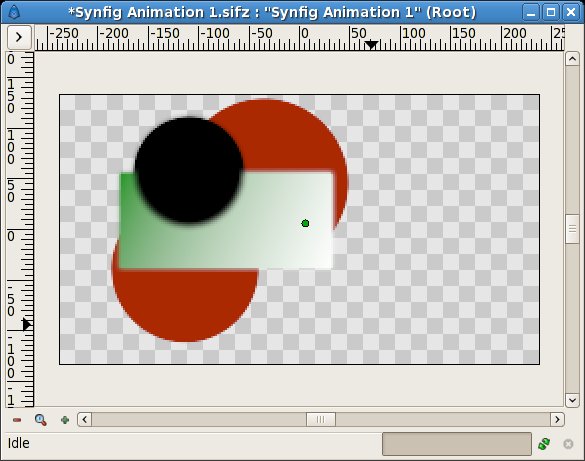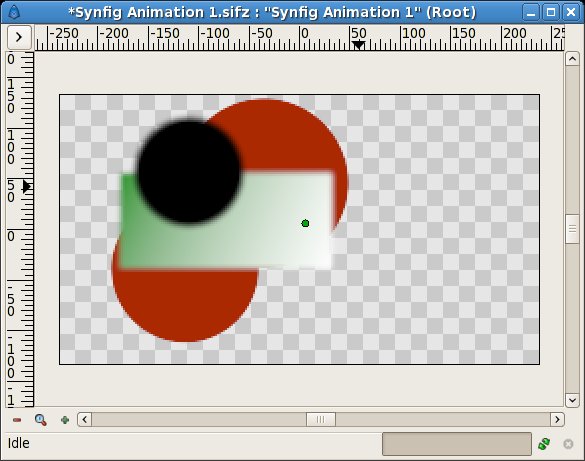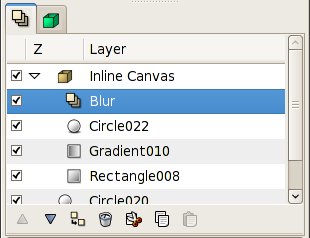Adding Layers
| Language: |
English • Deutsch • español • suomi • français • italiano • Nederlands • português • română • русский • 中文(中国大陆) |
Usual note to the reader: This is not yet finished; please be patient.
Introduction
In the previous tutorial, you made your first simple animation by changing the attributes of primitive objects, such as: position, color, and size. These simple types, however, are seldom sufficient to create advanced characters and objects. To do so, Synfig uses Layers. They are similar to layers used in other drawing applications in that they are used to separate different elements of an image.
|
However, Synfig is different from layers in other programs in at least three respects:
As you will see, layers are an extremely important aspect of Synfig, much more so than most graphics programs. Understanding the concept of layers is an important part in understanding how Synfig works.
Combining LayersSo let's look at a simple example of how we can combine two layers to create a gradient effect on a rectangle.
You can treat this layer like any other layer -- move it around, duplicate it, copy and paste it. By clicking on the arrow you can expand the inline canvas to see its contents, your previous two layers, the gradient and the rectangle. If you want to change the name of it to something more descriptive, just select the layer in the layer tab and click on its label. Then you just edit it in place. You can do this for ANY layer, and are strongly encouraged to do so. Using localityHowever, there is still a problem: The gradient still covers the whole canvas althought we wanted it to be restricted on the rectangle. To do so, activate the gradient layer in the Layer tab. Now go to the Params Panel (by default a tab in the Params-Children-Keyframes window), and search the attribute called 'Blend Method'. Double-click the entry and select 'Onto' from the appearing drop-down menu. The gradient should now be restricted to the rectangle. Congratulations! You just made your first interacting layers with Synfig. If only for the additional organization, encapsulating layers into inline canvases dramatically improves the ease of use of Synfig Studio. But lots of programs can do this. The concept of scope as just demonstrated sets Synfig apart from other programs with layer hierarchies. However, a layer can only modify the data that it gets from directly below it. In other words, if you were to throw a Blur Layer on top of the layers inside the inline canvas we just created, it would just blur them -- anything under the inline canvas would not be blurred! Let's try it. Create two red circles and in the Layers Panel move them under the inline canvas. Now our inline canvas (with rectangle and gradient) is in front of those two circles. Expand the inline canvas to show its contents, and select the top layer inside of it (should be the "Gradient" layer). This is where we want to insert new layer. Create another circle filled with a black color. Layer with circle will be created over the gradient layer inside the inline canvas. Now, right click on the layer with black circle in the Layers Panel and a popup menu will appear. The first item in that popup is "New Layer". Inside of the "New Layer" menu, you'll see several categories of layers you could create, but what we want is a blur, so goto the Blur category and select the "Blur" layer. (so that would be "New Layer->Blurs->Blur") Well, it blurred... but something is not quite right - outside edge of contents of the inline canvas is still sharp. It is doing this because the blend method of the blur defaulted to "Composite" (you can change the default blend method for new layers from the New Layer Defaults section of the Toolbox). What we want is a blend method of "Straight". Just select the blur layer, and change the Blend Method to "Straight" in the Params Panel.
Ok, now we have all of the contents of the inline canvas blurred, but everything under it is sharp! Digging further...If you care to look into Synfig's main menu 'Layer > New Layer' you will note quite a lot of different possibilities for making layers. Several of them sound rather unusual; 'Transform > Rotate' for example. You can use this to add new attributes to your objects. And just like other, basic attributes in the previous animation tutorial, you can change them to be different on certain keyframes. Synfig will take care of interpolating the steps in between. For example, you could create a some shape and add a Rotate Layer over it. Combine this with the lesson learned in the last tutorial and you can create a rotating effect. This technique is used for creation of Cut-out Animation. |
